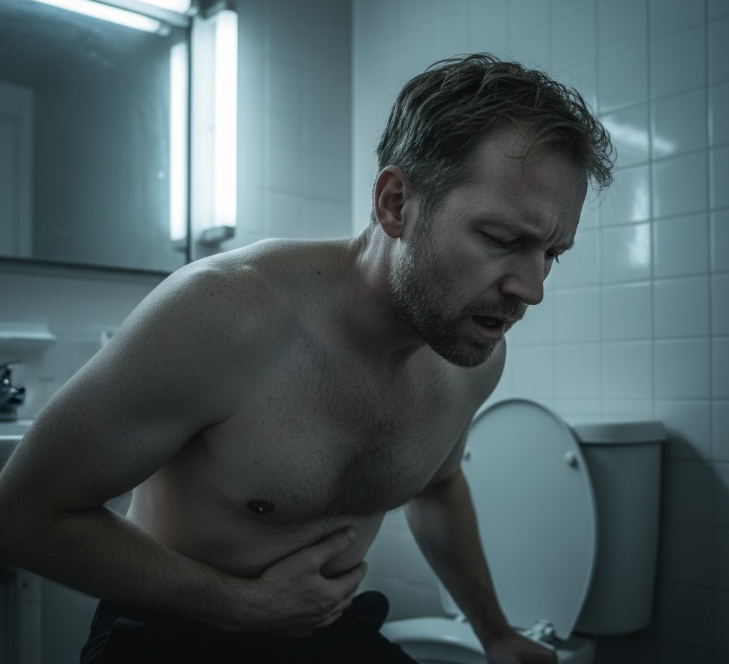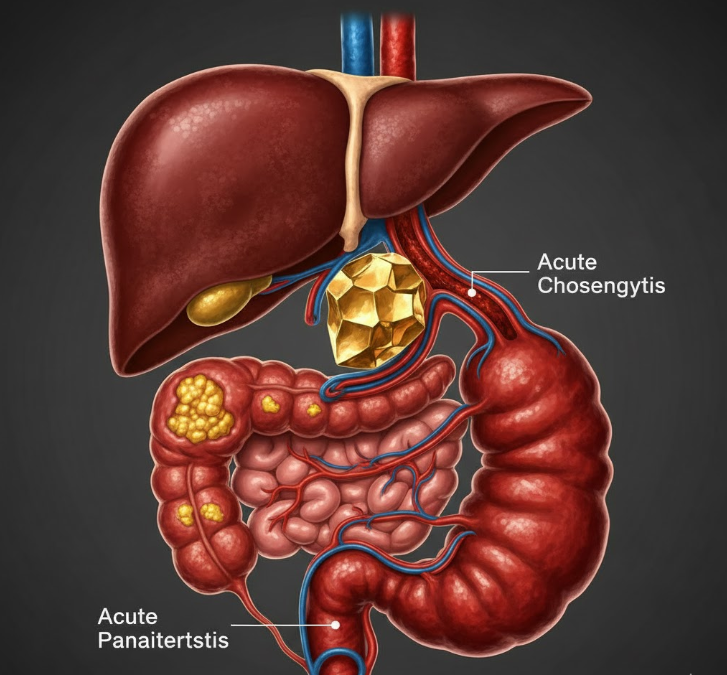It’s wild to think that 10, maybe 15%, of us are walking around with gallstones right now. Most of us have absolutely no idea. We just brush off indigestion or blame a “bad meal.”

But here’s the frightening part: what starts as a silent grain of sand can, over years, grow into a major problem. The real danger emerges when these stones shift and create a blockage, triggering a medical emergency that seems to come from nowhere.
Of course, only a specialist can give you a real diagnosis, but knowing these five critical warning signs could honestly make all the difference.
1. That Sudden Pain You Can’t Ignore
This is the classic, telltale sign of a gallbladder attack. We’re not talking about a dull ache; this is a sharp, sudden, and severe pain in your upper right abdomen, right under your rib cage.
It often flares up after eating a fatty meal (when your gallbladder contracts) and can be so intense that some people compare it to kidney stones. The pain might even radiate to your back or right shoulder blade.
Why it’s dangerous: If this kind of intense pain lasts for more than two hours, it signals a potential blockage. The pressure can cause the gallbladder to become infected, inflamed, or even rupture.

2. When It’s More Than Just Feeling Queasy
When a stone blocks a bile duct, it throws your whole digestive system out of whack. This isn’t just occasional queasiness. It’s a persistent nausea and vomiting that can last for hours, making it impossible to keep food or even water down.
Why it’s dangerous: Beyond the risk of dehydration, this is your body’s distress signal that digestion has been severely disrupted.

3. The Gallstones Emergency Signal: Why a Fever Means Go Time
This is a major red flag. If you have that severe abdominal pain and a fever or chills, it’s a strong sign your gallbladder has become infected. This condition is called acute cholecystitis.
Why it’s dangerous: When bile backs up, it creates a perfect environment for bacteria. This infection can escalate incredibly fast, potentially leading to sepsis—a life-threatening, body-wide inflammatory response. A fever over 101°F (38°C) with these other symptoms is an emergency.

4. A Warning Sign You Can See (Jaundice)
Jaundice is the distinct yellowing of your skin and the whites of your eyes. It looks scary, and frankly, it is.
Why it’s dangerous: Jaundice is a visible sign of a serious internal blockage. Bile can’t get to your intestine, so it’s backing up into your bloodstream. This severe blockage can also lead to an infected bile duct (acute cholangitis) or even pancreatitis if the stone is lodged near the pancreas.

5. Changes in… Well, You Know
This one is less obvious, but just as critical. When bile isn’t flowing correctly, it shows in your waste.
You might notice:
- Pale or clay-colored stools (bile is what gives stool its normal brown color)
- Dark, tea-colored urine (a sign of bile in your bloodstream)
Why it’s dangerous: These symptoms confirm your biliary system is fundamentally blocked. Your body can’t properly digest fats or absorb crucial vitamins.
Why this works:
- Natural Integration: The keyword “Gallstones” starts the heading clearly.
- Conversational Emphasis: It uses the strong, descriptive phrase “Cascade of Failures,” which matches the content’s focus on severe complications (cholecystitis, pancreatitis).
- Direct & Urgent: It immediately tells the reader why they should care about the serious nature of the blockage.
Alternatively, you could try this option, which is slightly more direct:
- Alternative: When Gallstones Get Lodged: The Serious Risks You Can’t Ignore

When to Act (and How to Reset)
Look, don’t try to “wait it out” or “sleep it off.” If you experience severe abdominal pain lasting more than two hours, a high fever, or any signs of jaundice, you need immediate emergency care.
The only truly reliable solution to prevent future attacks is surgically removing the gallbladder (a cholecystectomy). It sounds intense, but most are done laparoscopically (with tiny incisions), and you can often go home the same day. And yes, you can live perfectly normally without it.
But what if you want to reset your risk before it gets to that point? If you know you have asymptomatic stones or are at high risk, a few lifestyle changes can make a big difference.
- Eat regular meals. Oddly enough, skipping meals or long fasts can increase gallstone risk.
- Focus on healthy fats and fiber. Think olive oil, fish, nuts, avocados, and plenty of vegetables.
- Cut back on saturated fats. This means less fatty red meat, butter, cream, and heavy processed foods.
- Lose weight slowly. Be careful: rapid weight loss from crash dieting is a known risk factor for gallstones.
- Stay active. Regular, moderate exercise helps your entire digestive system function better.
The bottom line is that while gallstones are common, the symptoms aren’t. They are alarms. If any of this sounds uncomfortably familiar, it might be worth checking out. You know your body best—don’t let a “silent” problem turn into a crisis.